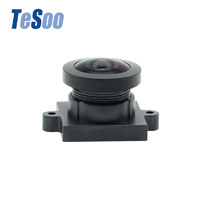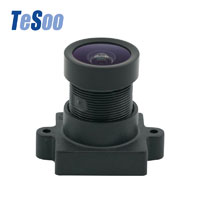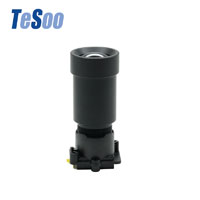Composition and Process Requirements Analysis of Vehicle Lens
Ⅰ. What is a vehicle lens?
The main hardware structure of the vehicle lens includes optical lens (including optical lens, filter, protective film, etc.), image sensor, image signal processor ISP, serializer, connector and other devices.
If the automotive camera lens is placed outside the car body, it needs to form a complete lens. If it is a DVR in the car, it can be assembled into the above lens module without considering waterproofing.
1. Optical lens: responsible for focusing light and projecting objects in the field of view onto the surface of the imaging medium. Depending on the requirements of the imaging effect, multi-layer optical lenses may be required. The optical filter can filter out the light bands that cannot be seen by the human eye, leaving only the visible light band of the actual scene within the human eye's field of vision.
2. Image sensor: The image sensor can use the photoelectric conversion function of the photoelectric device to convert the light image on the photosensitive surface into an electrical signal proportional to the light image. Mainly divided into two kinds of CCD and CMOS.
3. ISP image signal processor: mainly use the hardware structure to complete the pre-processing of the image sensor, the input image and video source RAW format data, which can be converted into YCbCr and other formats. It can also complete various tasks such as image scaling, automatic exposure, automatic white balance, and automatic focus.
4. Serializer: transmits the processed image data, which can be used to transmit various types of image data such as RGB and YUV.
5. Connector: used to connect the fixed lens.
The manufacturing process and reliability requirements of vehicle-mounted lenses are also higher than those of industrial lenses and commercial lenses. Since automobiles need to work in harsh environments for a long time, vehicle-mounted lenses need to be stable in complex working conditions such as high and low temperature environments, strong vibration, and high humidity.
Ⅱ. Process requirements of vehicle lens
1. High temperature resistance: the vehicle lens needs to work normally in the range of -40°C~85°C, and can adapt to drastic changes in temperature;
2. Anti-seismic: Vehicles driving on uneven roads will generate strong vibrations, so the vehicle lens must be able to resist various intensities of vibrations;
3. Antimagnetic: When the vehicle starts, it will generate extremely high electromagnetic pulses, which requires extremely high antimagnetic performance;
4. Waterproof: The vehicle lens should be sealed very tightly, so that it can still be used normally after soaking in rainwater for several days;
5. Service life: the service life is at least 8 to 10 years to meet the requirements;
6. Ultra-wide-angle: The side-view surround-view lens must be ultra-wide-angle, with a horizontal viewing angle of 135°;
7. High dynamic: the vehicle is traveling fast, and the light environment faced by the lens changes drastically and frequently, so the CMOS of the lens is required to have high dynamic characteristics;
8. Low noise: It can effectively suppress noise when the light is dark, especially when the side-view and rear-view lenses are required to capture images clearly even at night.
Popular Camera Lens
Hot Camera Lens Articles

 English
English 

